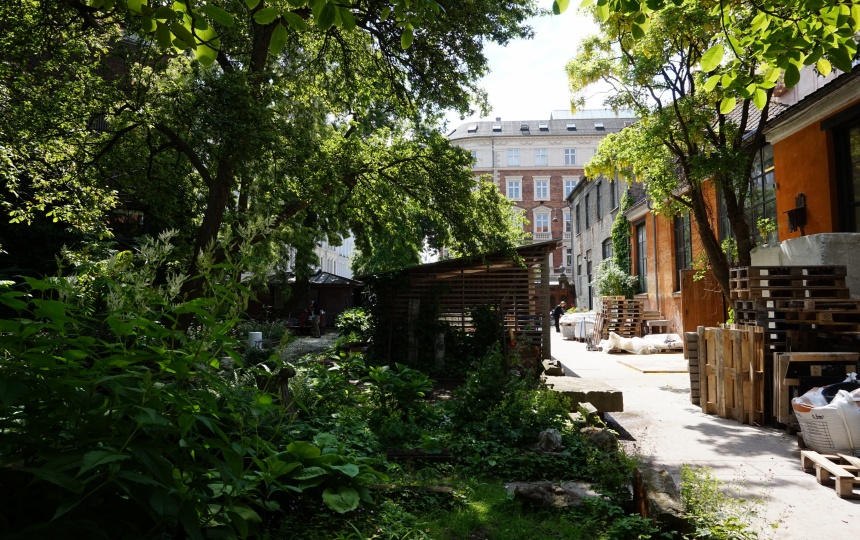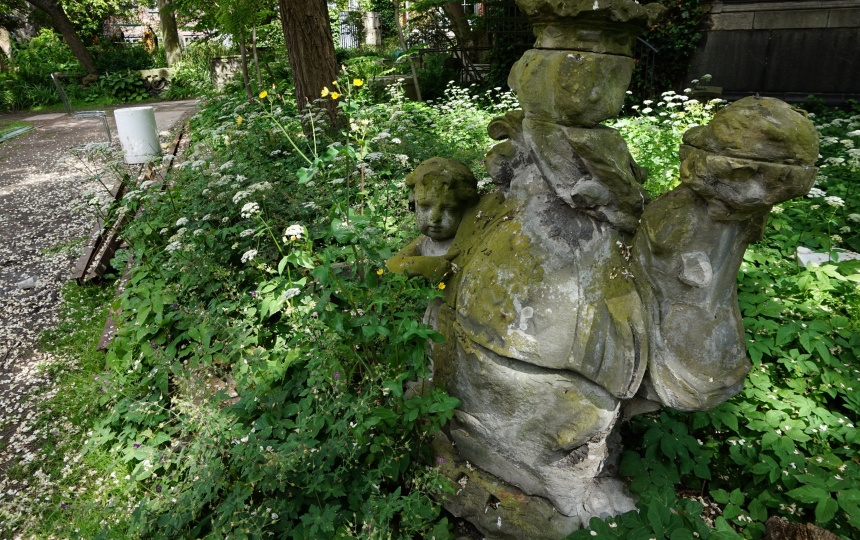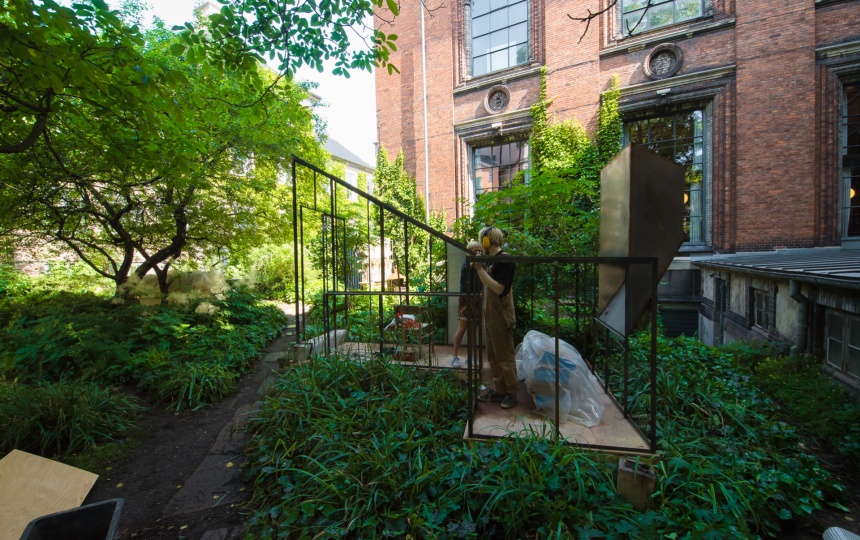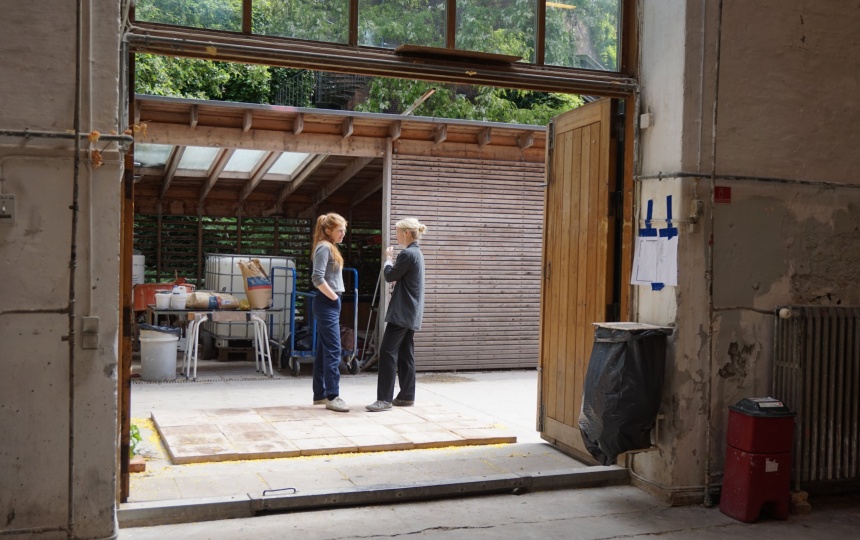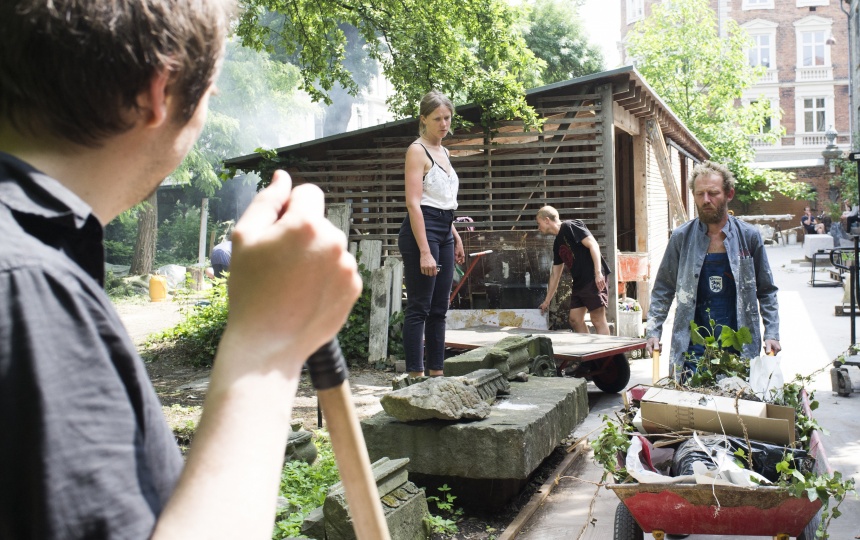FROM BAROQUE GARDEN TO BOTANICAL GARDENS
When Charlottenborg was built it was originally accompanied by formal gardens in the Baroque style. Facing the Nyhavn harbour, they acted as pleasure gardens for Ulrik Frederik Gyldenløve.
In 1778 the gardens were converted into Denmark’s Botanical Gardens. They retained this status for some 100 years, up until 1874. At that point the Botanical Gardens relocated to their present position at Østervold.
Much of the Charlottenborg garden disappeared in 1883 when it became the site of the exhibition building, which is now home to Kunsthal Charlottenborg and The Danish National Art Library.
THE SCULPTOR’S GARDEN TODAY
A small remnant of the former botanical garden still exists today in the present-day Sculptor’s Garden, which acts as an outdoor place of work for the students of the School of Sculpture. This is where they go to carve and sculpt out of doors.
Here you can find a few plants – such as an old narrow-leaved ash next to the Laboratory for Plaster – as reminders of the extensive former Botanical Gardens at Charlottenborg, which included several greenhouses, a palm house, and up to 9,000 different plants.
A range of fragments from history also adorn the sculptor’s garden: ruins from the old royal palace of Christianborg, designed by C.F. Hansen; Thorvaldsen’s tables; and a tombstone raised to commemorate N.A. Abildgaard’s dog, bearing this rather peculiar inscription: “Here lies the earthly remains of Jordano, a paragon of virtue and faithfulness. He was born in Rome in the second year of the reign of PII Sexti. He died in Copenhagen in the strange year when a pound of sugar cost XLIII shillings”.
When the garden was renovated in 2002, a small bronze statue of Thorvaldsen was cast to commemorate the famous sculptor. The statue stands on a plinth near the house that served as Thorvaldsen’s home and studio, and which is now known as “Thorvaldsen’s House”.
Sources:
- Fuchs, Anneli & Salling, Emma (red.), KUNSTAKADEMIET 1754-2004, bind III, Det Kongelige Akademi for de Skønne Kunster & Arkitekternes Forlag 2004
- Stræde, Morten (red.) Billedhuggerhaven, Kunstakademiets Billedkunstskoler, 2002
- Botanisk Have – Statens Naturhistoriske Museum, botanik.snm.ku.dk
